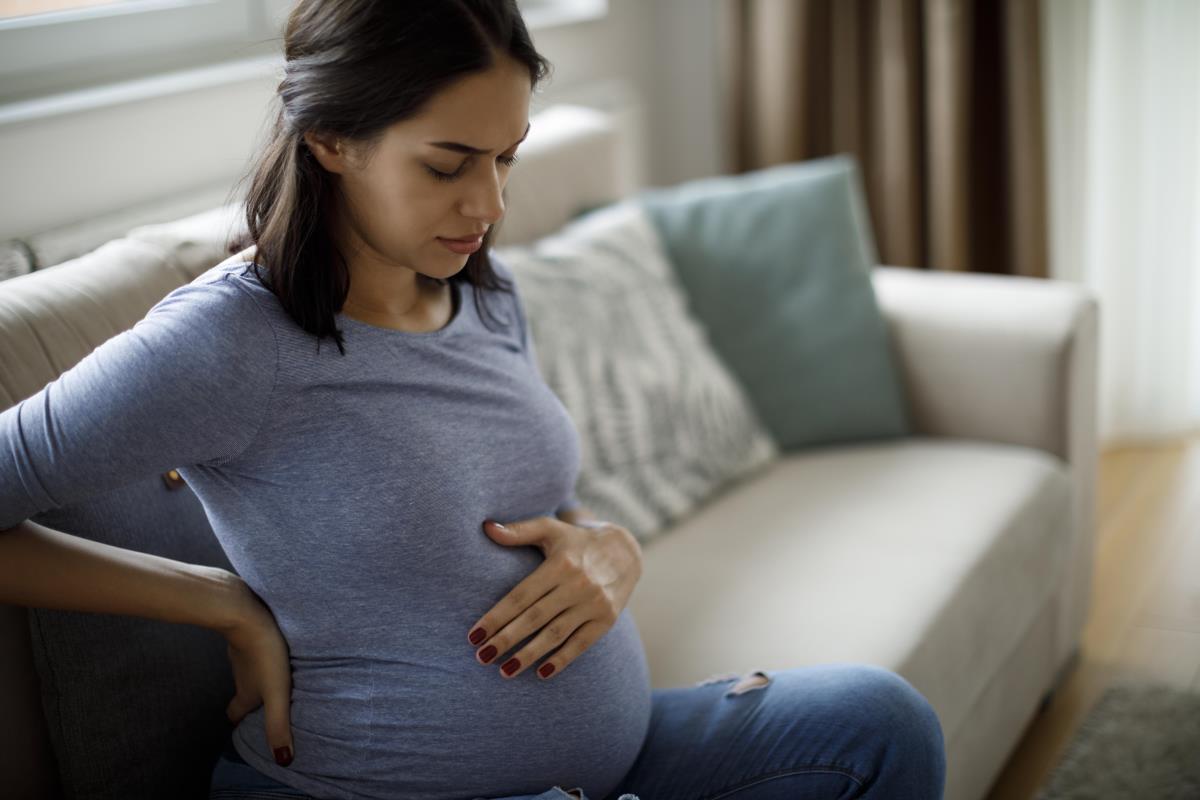How to Ease Pregnancy Aches and Pains

Pregnancy is an exciting time when the body goes through many changes - unfortunately, aches and pains come with the territory. We asked for expert advice on how to ease the discomfort and stay as fit as possible.
---
Before undertaking any new exercises, please talk to your midwife or doctor - It's important to discuss any pregnancy aches and pains with your midwife or doctor and talk to them about what exercises you are intending to do so they can observe or check your progress as well as advise you if there are any medical reasons for you to avoid any positions or exercise routines.
Along with the excitement of having a baby and changes to your lifestyle, pregnancy introduces all sorts of changes to your body - from glossy hair, glowing skin and the pleasure of feeling your baby's first movements to less welcome aches and pains such as morning sickness, heartburn, swollen ankles and pelvic girdle pain.
Pain During Pregnancy
Back pain in pregnancy is especially common, even in the early stages. The hormone relaxin can start to soften your joints before your baby bump has started to show causing unexpected pains in your hips, pelvis and lower back. Long hours sat at a desk or spending most of the day on your feet can exacerbate the problem for working mums-to-be.
How to Ease Pregnancy Pains
Regular exercise
Regular exercise improves your strength, boosts your circulation and eases tension. If your muscles are strong and toned, your body is much better able to cope with the extra strain of pregnancy. Aim for at least 30 minutes of exercise five days a week to enjoy the benefits - staying active really does help alleviate a whole raft of pregnancy niggles.
Get your heart rate up
You don't have to go to a gym or an exercise class to include more exercise in your life - there are lots of ways to increase your heartbeat and improve your cardiovascular strength. Even walking more will help - use the stairs instead of the lift, get off the bus one stop earlier or go out for a walk at lunchtime.
Move and stretch
If you're sitting at a desk all day make sure you get up, move and stretch regularly. Adjust your computer screen if necessary to make sure it's the right height so you are able to sit upright with a straight back.
Correct your posture
It can be especially tiring being on your feet all day when you're pregnant. Try and stand tall with your back straight and avoid slumping, which puts more strain on your back. Half an hour's exercise may not be your first choice after a day at work, but you will feel better for it!
Aim for 15 minutes in the morning and 15 minutes after work if you find that's easier or go for a walk at lunchtime.
Use a 'fitball'
Use a fitball instead of a chair whenever possible; it will work your back and strengthen your core muscles. Circling your hips on the ball in both directions is good for easing backache or lean across it for a deep, relaxing back stretch.
Invest in supportive clothing
Wearing supportive clothes makes a big difference! Find leggings to support your bump and lower back.
Exercises to Ease Aches and Pains During Pregnancy
Try these exercises to ease your backache:
Shoulder stretch
This simple yoga stretch will loosen your back, neck and arms:
- Kneel on the floor, sitting back firmly on your heels, back straight and head aligned to your back and neck. Relax the muscles in your face.
- Inhale and take your shoulders up high towards your ears. As you exhale drop your shoulders down, pushing your shoulder blades together and opening out your chest. Inhale again bringing your shoulders forwards and up again in a smooth circular motion.
- Repeat a few times until the stiffness starts to leave your body, breathing deeply and keeping your arms relaxed.
- You can do this exercise at your desk- just make sure you sit tall with your back straight.
Child's pose
This comfortable, relaxing yoga pose takes the weight of the baby off your spine completely, releasing your spinal muscles, increasing the mobility of your pelvic joints, and releasing tension in your hips and groin.
- Kneel on your yoga mat (or blanket) with your knees as wide apart as possible, feet turned inwards. Breathe deeply, releasing the tension in your lower back.
- Circle your shoulders loosely, to relax your arms and neck.
- Come forward slowly, moving from the hips as you lengthen your back and place your palms flat on the floor with your arms straight. Go as far forward as you feel comfortable, stretching your arms out in front of you and, if you can do so without straining, place your forehead on the floor. Come up slowly when you are ready to do so.
- Do this pose over a large cushion or bean bag if you find it more comfortable.





